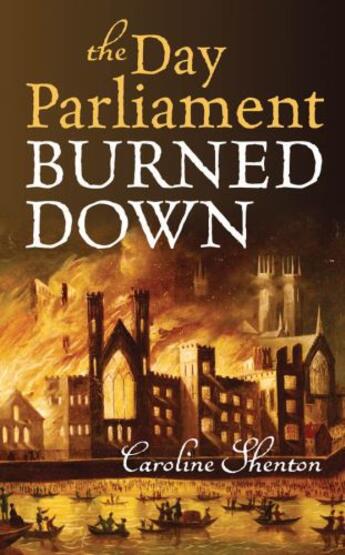Des idées de lecture pour ce début d'année !
Passionné(e) de lecture ? Inscrivez-vous
gratuitement ou connectez-vous pour rejoindre la
communauté et bénéficier de toutes les fonctionnalités du site !

In the early evening of 16 October 1834, to the horror of bystanders, a huge ball of fire exploded through the roof of the Houses of Parliament, creating a blaze so enormous that it could be seen by the King and Queen at Windsor, and from stagecoaches on top of the South Downs. In front of hundreds of thousands of witnesses the great conflagration destroyed Parliament's glorious old buildings and their contents. No one who witnessed the disaster would ever forget it.
The events of that October day in 1834 were as shocking and significant to contemporaries as the death of Princess Diana was to us at the end of the 20th century - yet today this national catastrophe is a forgotten disaster, not least because Barry and Pugin's monumental new Palace of Westminster has obliterated all memory of its 800 year-old predecessor. Rumours as to the fire's cause were rife. Was it arson, terrorism, the work of foreign operatives, a kitchen accident, careless builders, or even divine judgement on politicians?
In this, the first full-length book on the subject, head Parliamentary Archivist Caroline Shenton unfolds the gripping story of the fire over the course of that fateful day and night. In the process, she paints a skilful portrait of the political and social context of the time, including details of the slums of Westminster and the frenzied expansion of the West End; the plight of the London Irish; child labour, sinecures and corruption in high places; fire-fighting techniques and floating engines; the Great Reform Act and the new Poor Law; Captain Swing and arson at York Minster; the parlous state of public buildings and records in the Georgian period; and above all the symbolism which many contemporaries saw in the spectacular fall of a national icon.
Il n'y a pas encore de discussion sur ce livre
Soyez le premier à en lancer une !

Des idées de lecture pour ce début d'année !

Si certaines sont impressionnantes et effrayantes, d'autres sont drôles et rassurantes !

A gagner : la BD jeunesse adaptée du classique de Mary Shelley !

Caraïbes, 1492. "Ce sont ceux qui ont posé le pied sur ces terres qui ont amené la barbarie, la torture, la cruauté, la destruction des lieux, la mort..."